Pattern Properties
In this document, we will discuss the usage and various properties of Patterns in a report model.
What is a Pattern?
A Pattern is a logic or rule based on which we define data regions. You can specify a pattern that Astera matches on the unstructured data file to capture data into a structured format. A pattern can be an alphabet, a character, a number, a word or a combination of these.
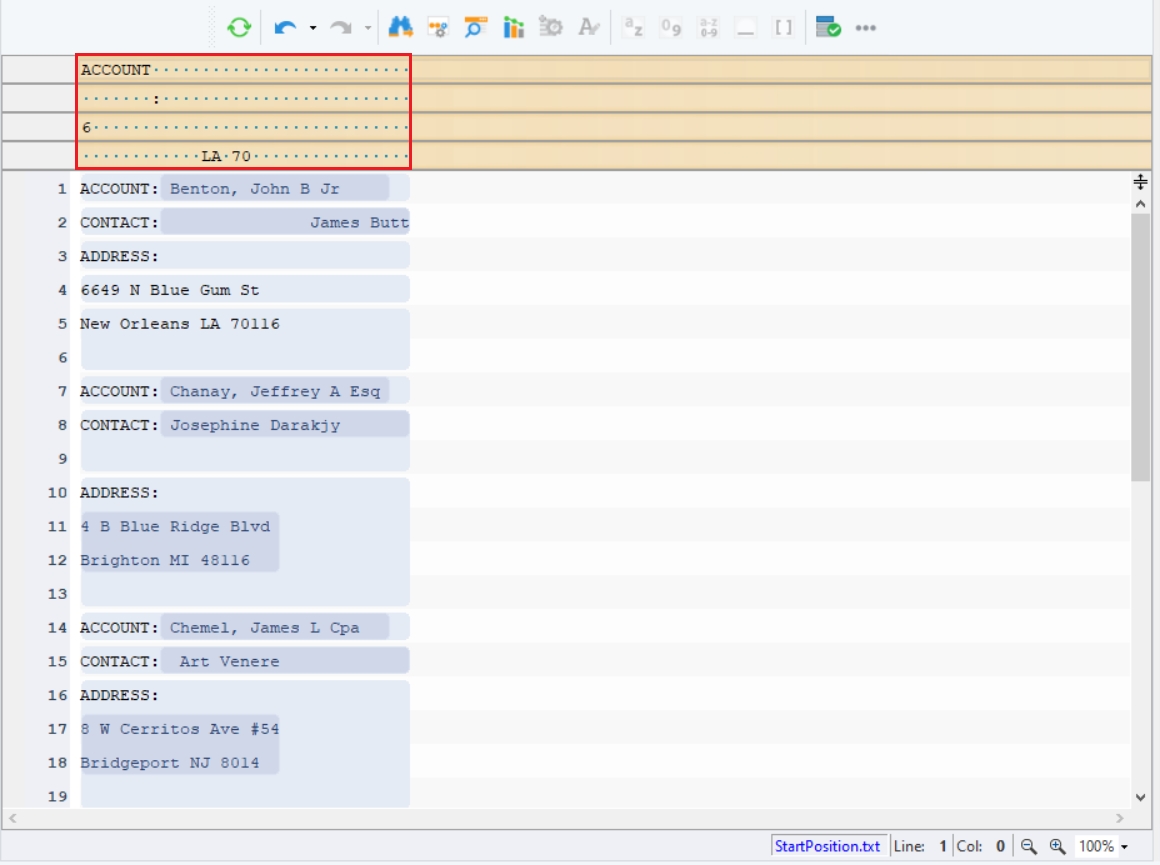
Specifying a Pattern
We specify a pattern in the pattern box right above Report Model designer.
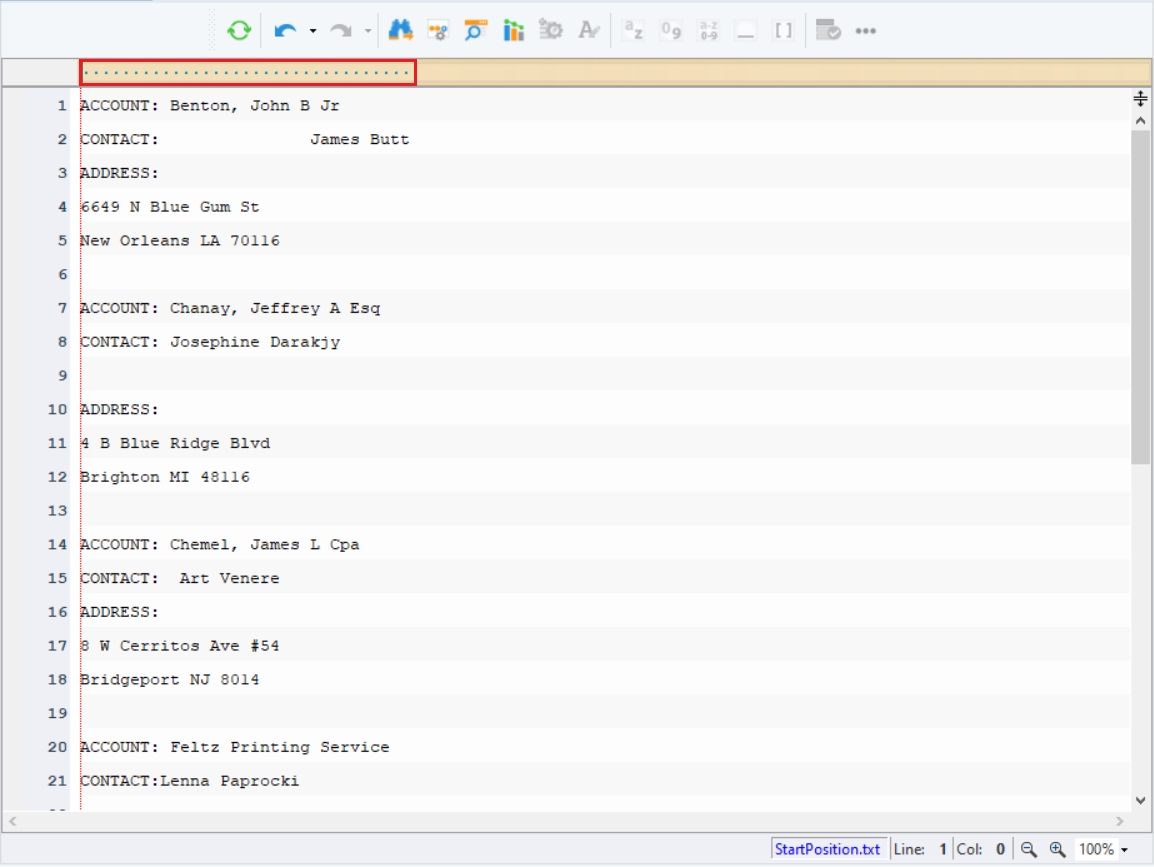
Astera has built-in wild cards to facilitate region selection by specifying flexible patterns. These wildcards are found in the toolbar located at the top of the Report Model designer.

A short description of each wildcard is given below.

Pattern Box Context Menu
You can also access the wildcards and additional features for patterns in Astera by right-clicking on the pattern box.
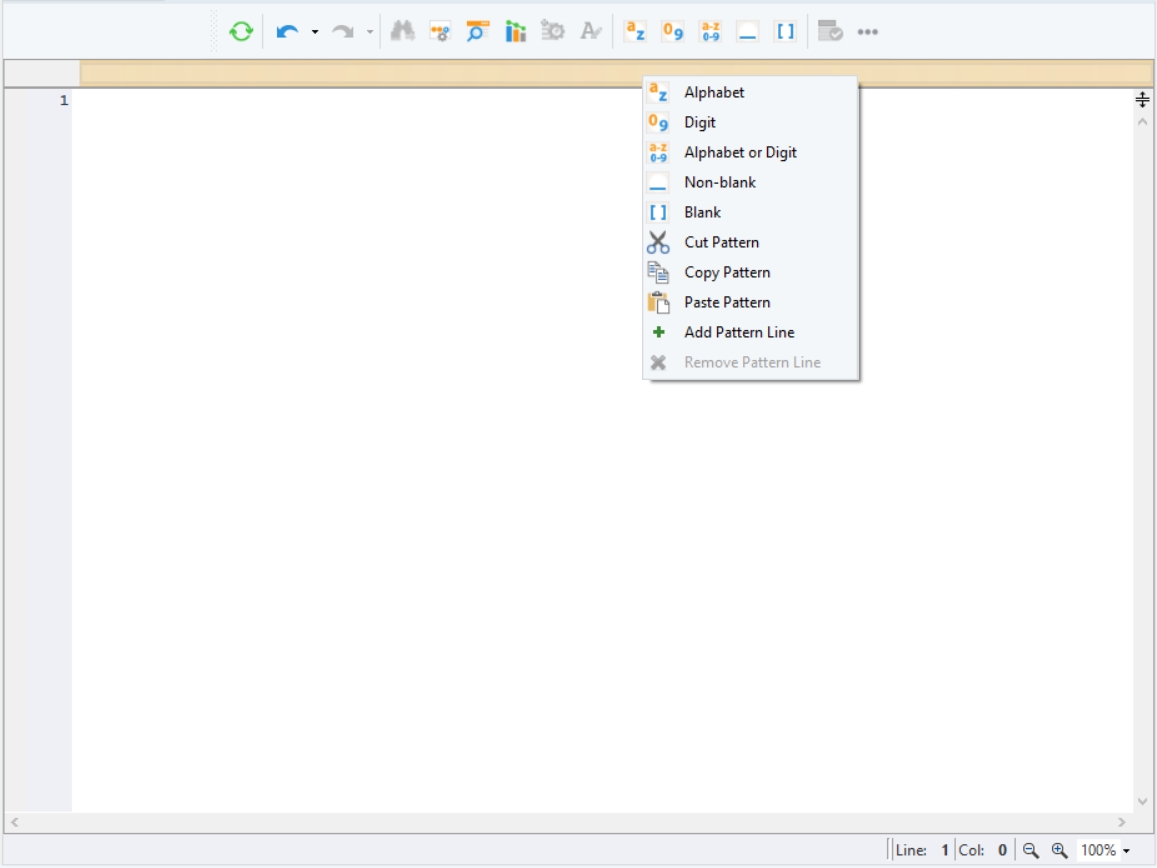
A context menu opens with the following options available:
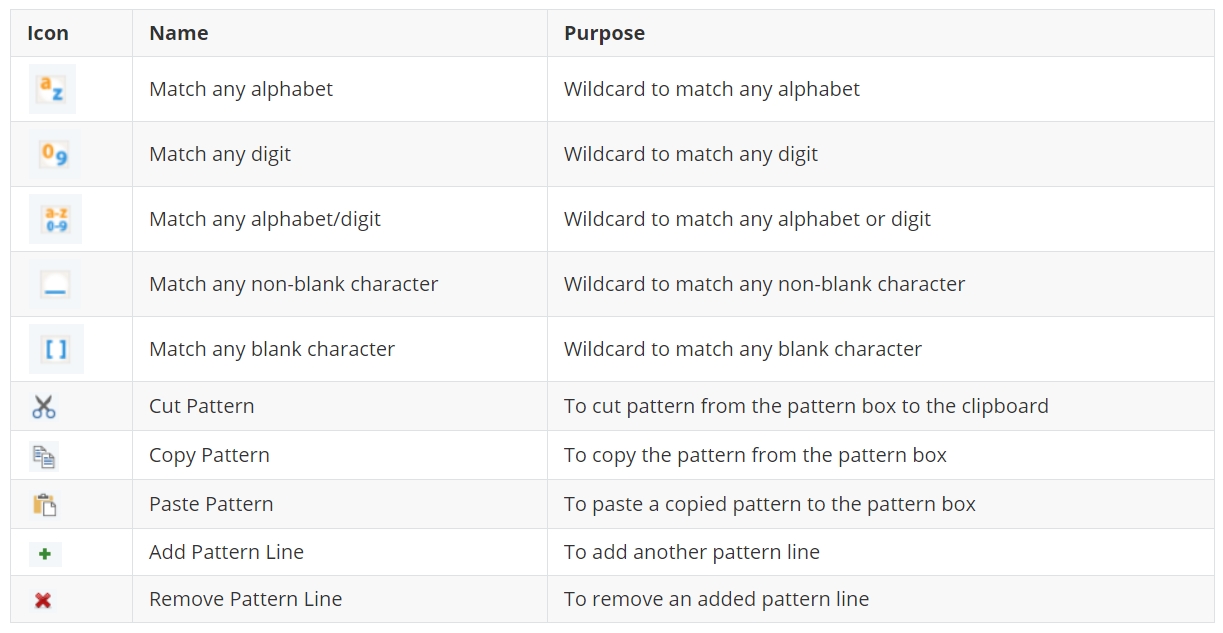
Pattern Properties Panel
The Pattern Properties panel allows users to specify and modify the properties of any pattern in a report model.
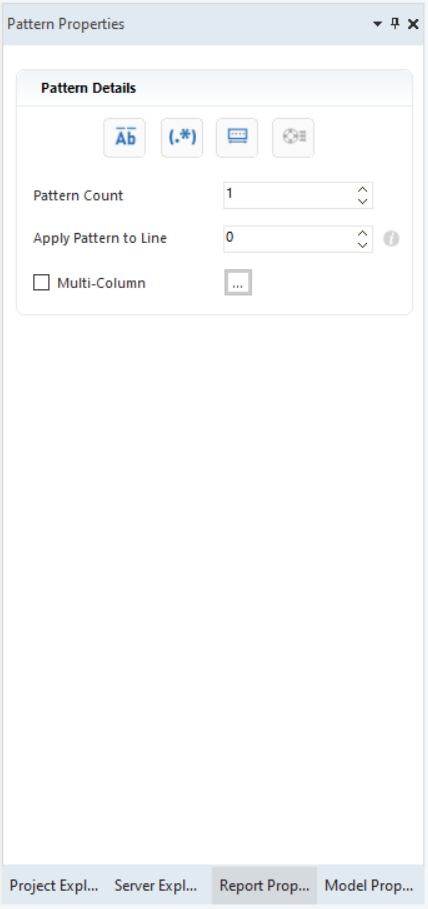
You can specify up to five patterns at a time in a report model by increasing the number of Pattern Count in the Region Properties group-box in the Pattern Properties panel.
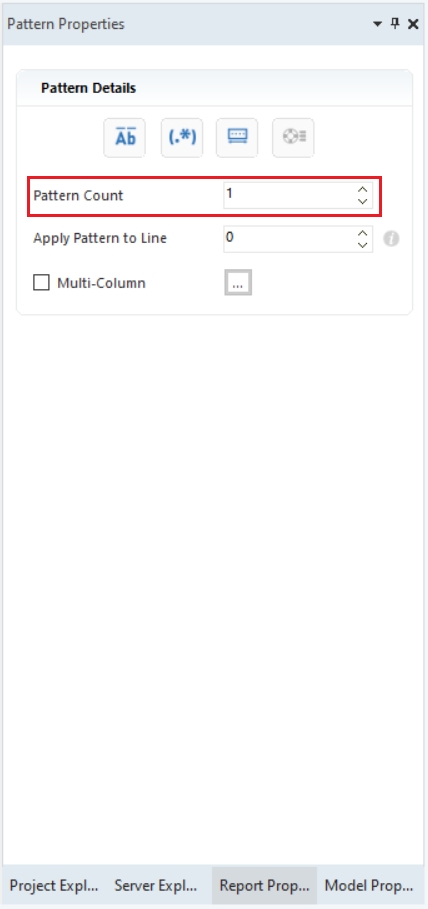
You can learn more about how the Pattern Count works by clicking here.
The Apply Pattern to line option is useful when the specified pattern does not capture the first line of the desired data region. Simply put, when there is some information above the pattern keyword then we increase Apply Pattern to Line from 0.
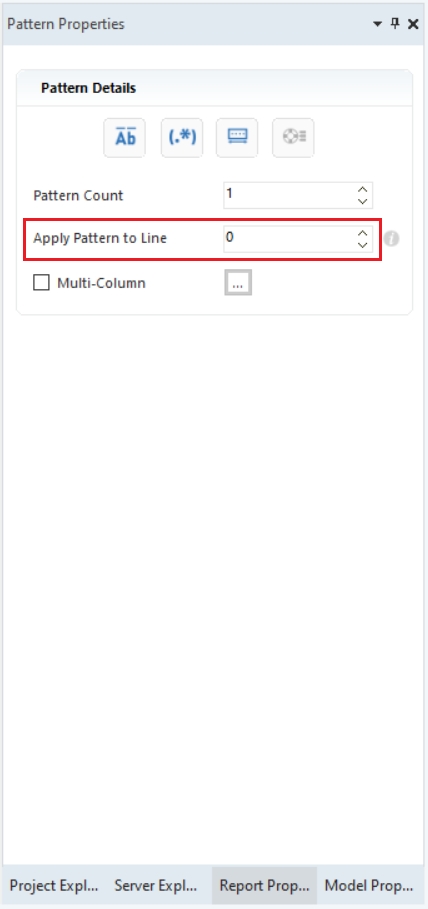
You can learn more about how the Apply Pattern to Line option works by clicking here.
Let’s discuss the options available in the Pattern Properties group-box:
![]()
Case Sensitive Pattern Match
This option matches the data on a case-sensitive basis. For example, "Account" and "account" will be treated as two different patterns by Astera if this checkbox is enabled.
![]()
Pattern is a Regular Expression
It directs Astera to read the specified pattern as a regular expression. A regular expression is a special text string used to describe a pattern.
![]()
Floating Pattern
A floating field pertains to data points that appear in various locations throughout your report. The Floating Pattern option allows you to capture patterns within a report model even when the repeated phrases are misaligned vertically. Once the Floating Pattern option is selected, it will capture all the lines that match the specified pattern.
![]()
Floating Fields
The Float Fields option will automatically appear once the Floating Pattern option is selected. The Float Fields option ensures that the line spacing also floats and is based on the line used to capture the first field. This is checked by default but can also be unchecked if you'd like the field position to be fixed.
This concludes our discussion on the Pattern Properties panel in Report Models.
Was this helpful?